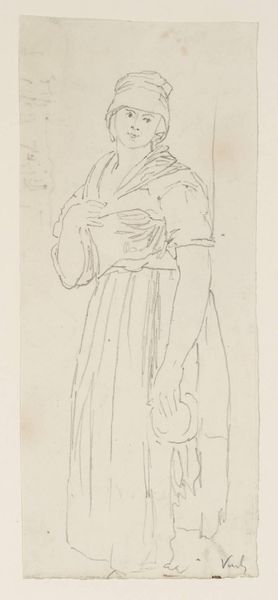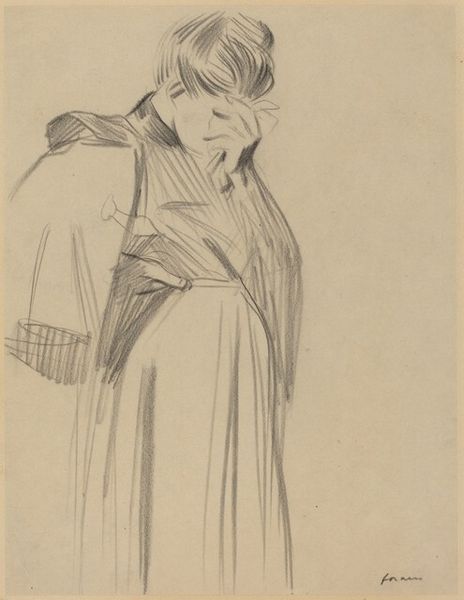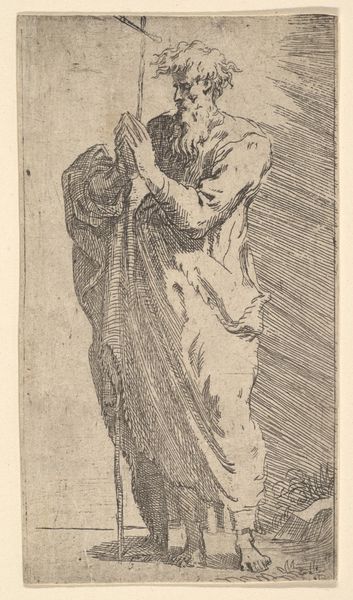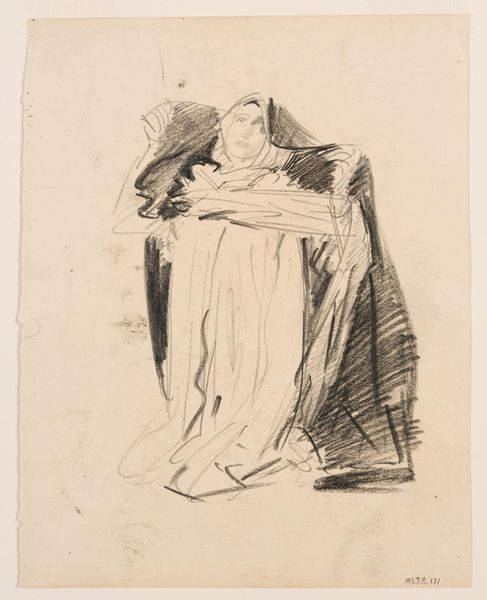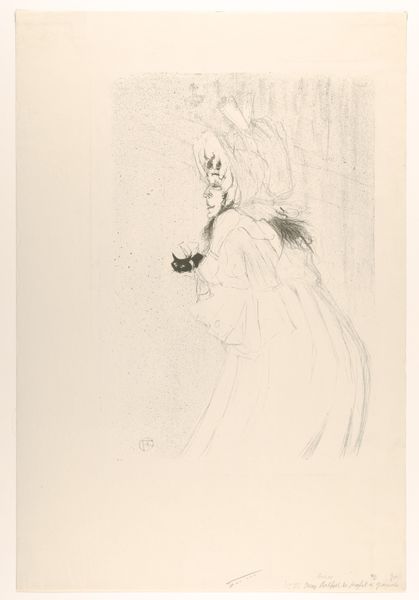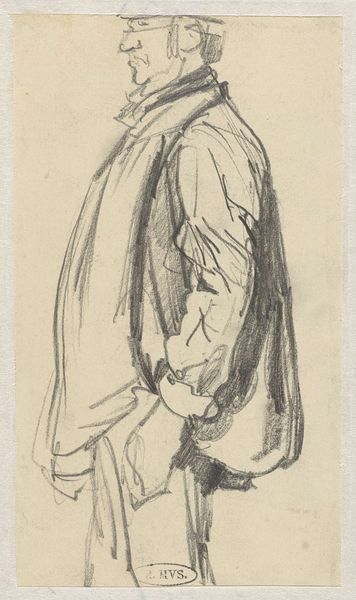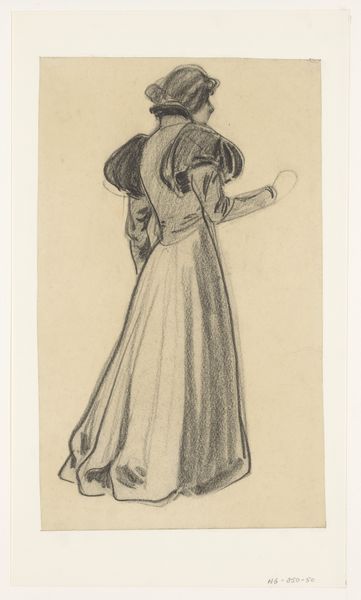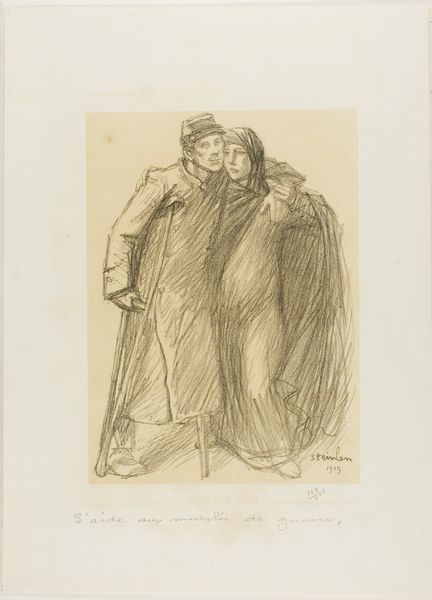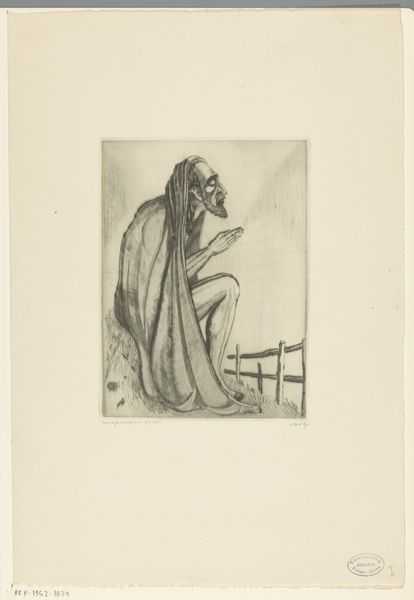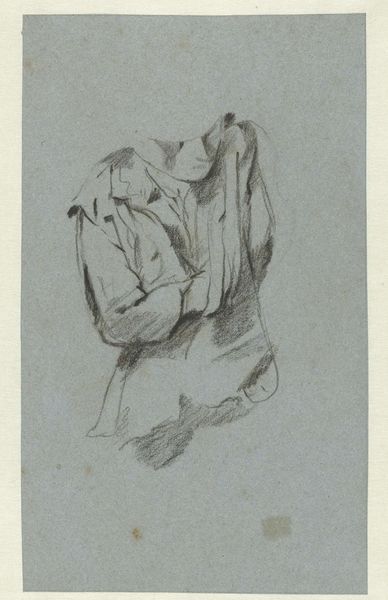
drawing, pencil
#
portrait
#
drawing
#
imaginative character sketch
#
light pencil work
#
pencil sketch
#
war
#
old engraving style
#
landscape
#
cartoon sketch
#
figuration
#
personal sketchbook
#
ink drawing experimentation
#
pen-ink sketch
#
pencil
#
sketchbook drawing
#
storyboard and sketchbook work
#
realism
Dimensions: height 479 mm, width 289 mm
Copyright: Rijks Museum: Open Domain
Curator: I'm immediately struck by the mood, there’s an overwhelming sense of sadness that seems to emanate from the work. What do you see? Editor: This pencil drawing by Théophile Alexandre Steinlen, titled "Vrouw en frontsoldaat tijdens de Eerste Wereldoorlog"—"Woman and Front Soldier during the First World War"—from 1915, is a poignant reflection on the personal cost of war. Look closely at the sketched figures, a soldier and a woman, perhaps a wife or sister, standing together, and the stark minimalist lines capture grief, loss, and the disrupted social order. Curator: Absolutely, I love that it feels so raw, almost unfinished. There’s an intentional simplicity to it that allows the emotional weight to take center stage. It reminds me of a half-forgotten dream. And did you notice those little crosses towards the bottom right? They give me chills, hinting at the graves left behind. Editor: Precisely! The understated landscape element subtly highlights the theme of war and absence. This placement and the rendering of those tiny grave markers speaks to broader narratives of national mourning and the collective trauma experienced during and following World War I. I read the embrace of the woman, draped across the soldiers' shoulders, not only as intimacy, but of solidarity and possibly despair. Curator: It makes you wonder about their future. There's such tenderness there, but also such profound weariness, etched right onto their faces, despite the sketched simplicity of it all. The way the artist plays with shadow is stunning, the darkness clinging to the figures like a shroud. I love how the light seems to shy away from the scene. Editor: Yes, the formal qualities certainly enhance its narrative potency. I think it also prompts a deep reflection on the role of women during the First World War. Often, accounts focus almost entirely on men's experience, but here we get a glimpse, a story—almost a lament, I’d argue—about the equally significant, albeit obscured, female experience, both on the front lines and on the home front. Curator: I concur! Well, this piece certainly offers much to ponder. Editor: Indeed, it's a powerful depiction of a generation marked by tragedy, but also resilience, an ability to endure. It compels one to contemplate the many hidden facets of wartime experience, and it urges us to listen, not just to what's shown but what this work insinuates through light, line, and emotion.
Comments
No comments
Be the first to comment and join the conversation on the ultimate creative platform.
